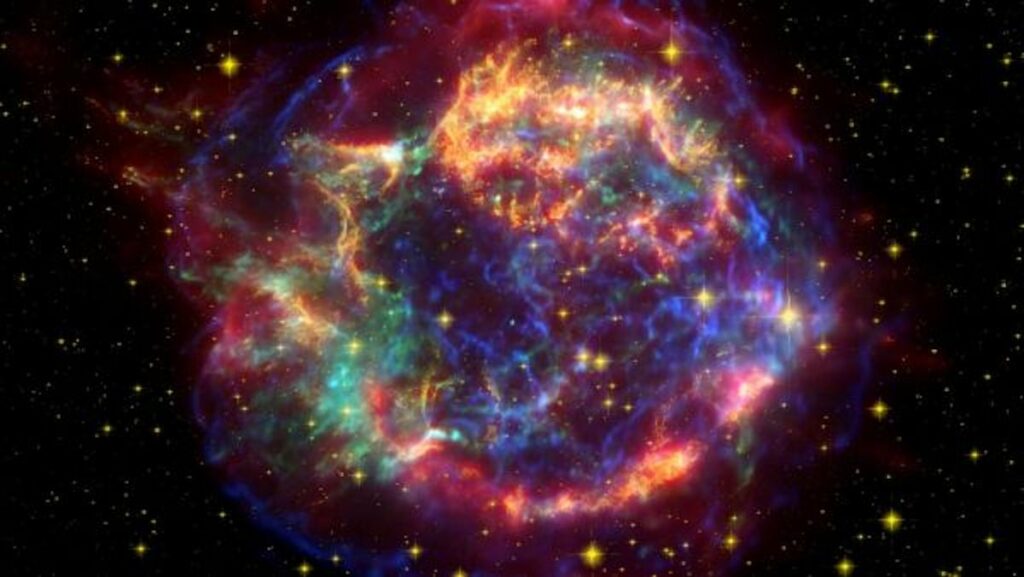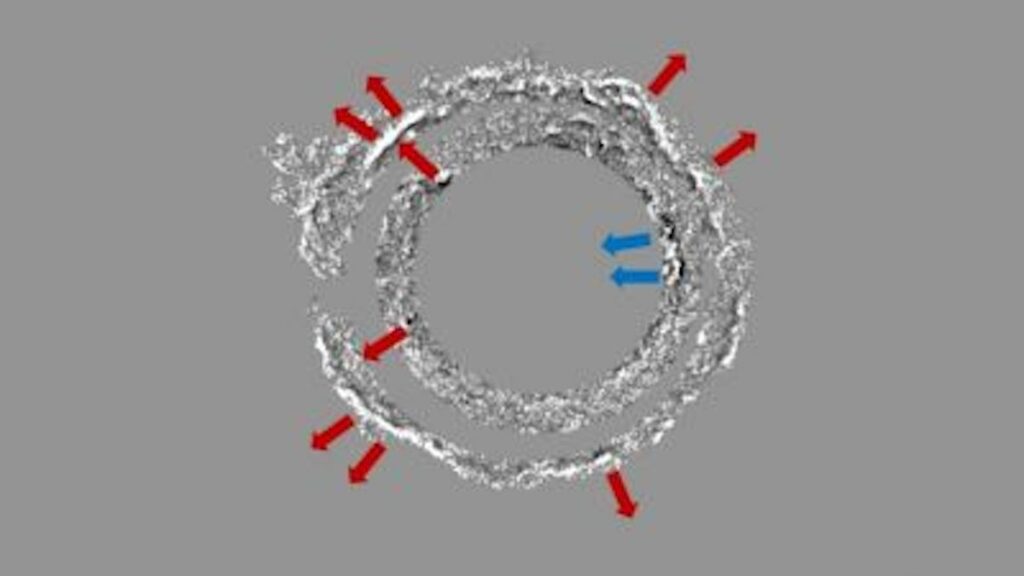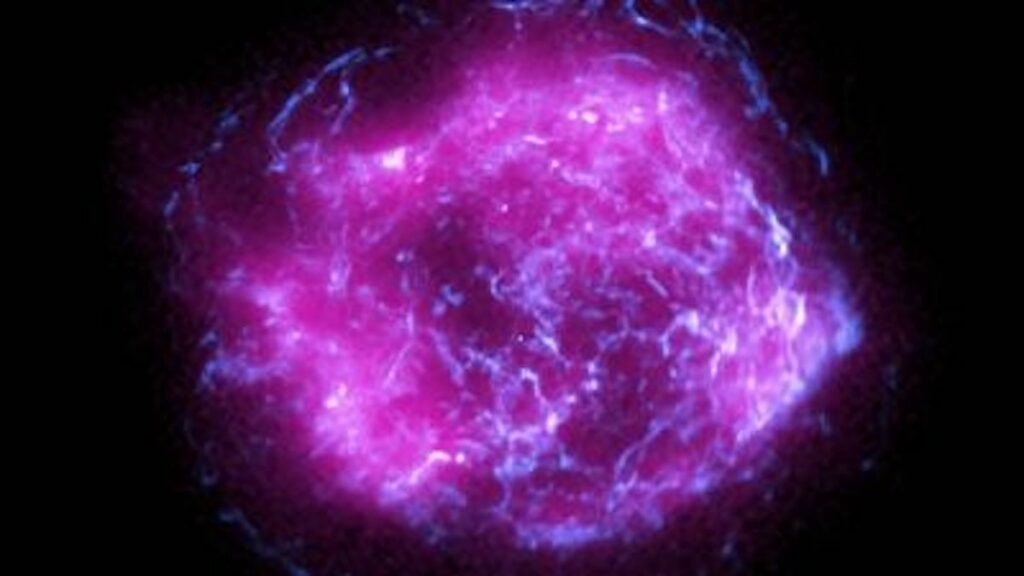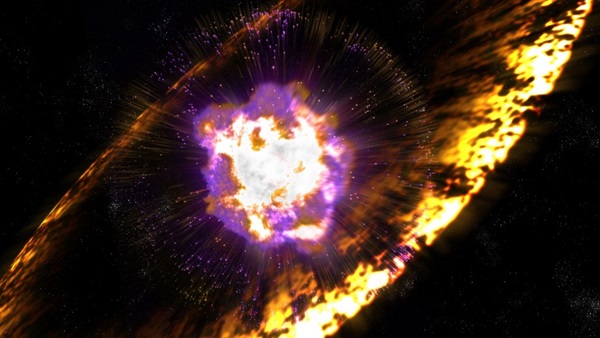Unusual supernova known as a “reverse shockwave” is erupting in the opposite direction and heading for Earth
A recent research indicates an odd behavior of a strong shock wave passing through a cloud of gas left behind by the cataclysmic death of a star: a portion of it is moving in the other direction.
Researchers discovered in the study that the shock wave is speeding up at various speeds, with one component falling back toward the star explosion, or supernova, in what the study’s authors refer to as a “reverse shock.”

One of the nearest supernova remnants is Cassiopeia A, a nebula or gas cloud in the constellation Cassiopeia. It is around 11,000 light-years away from Earth. The 16 light-year wide nebula is composed of gas, primarily hydrogen, that was ejected both before and after the explosion that shattered the parent star. The gas is still being shaken by the shock wave left over from the explosion, which theoretical models predict should be spreading uniformly like a perfectly spherical balloon that is continuously being expanded.
However, the researchers discovered that this was untrue.
According to lead author Jacco Vink, an astronomer at the University of Amsterdam in the Netherlands, “for a long time, we believed something unusual was going on inside Cassiopeia A.” He said that earlier research had revealed the nebula’s interior dynamics to be “very chaotic” and underlined the possibility that the shock wave’s western section may potentially be traveling against gravity.
In the latest investigation, scientists used X-ray photos gathered by NASA’s Chandra X-ray Observatory, an Earth-orbiting observatory, to evaluate the shock wave’s motion. Data gathered over a period of 19 years showed that a portion of the shock wave’s western area was, in fact, receding in the opposite direction in a reverse shock.
However, scientists also found something even more unexpected: A portion of the same location, like the remainder of the shock wave, was still moving away from the supernova’s centre.
Uneven expansion
According to Vink, the gas in Cassiopeia A is expanding at an average pace of around 13.4 million mph (21.6 million kph), making it one of the fastest shock waves ever observed in a supernova remnant. This is mostly due to the remnant’s youth; Earth first received light from Cassiopeia A in 1970. However, shock waves gradually slow down as a result of losing velocity to their surroundings.
An inner shell and an outer shell are the two primary expanding bands of gas that make up Cassiopeia A. The inner and outer shells of this shock wave, which are two half of the same shock wave, are moving in the same direction and at the same speed over the majority of the nebula. However, in the western area, the two shells are travelling in the opposite directions: the inner shell is moving back toward where the exploding star would have been, while the outer shell is still spreading outward.

About 4.3 million miles per hour (6.9 million kilometers per hour), or one-third of the average expansion speed of the remainder of the nebula, is the pace at which the reverse shock is retreating. What baffled the scientists, though, was how quickly the outer shell was growing here while the inner shell was retreating. However, they discovered that it was actually speeding more quickly than certain other sections of the shock wave. The researchers had anticipated that the outer shell would be growing at a slower pace compared to the remainder of the shock wave. Vink remarked, “That was a complete surprise.
Cosmic collision
According to Vink, the peculiar expansion in Cassiopeia A’s western portion defies predictions made by theoretical supernova models and shows that something went wrong with the shock wave following the star explosion.
The shock wave met with another shell of gas that was probably released by the star before it burst, according to the researchers, who claimed that this is the most plausible scenario. The inner shell may have been pushed back toward the center as a result of the shock wave slowing down when it encountered this gas. Vink added that the outer shell could have managed to get past this obstruction and start accelerating once more. This indicates that the outer shell should be accelerating, which is exactly what we saw, as well as explaining the inner shell’s inward movement, the scientist continued.
The original star’s unusual death, according to the astronomers, may also account for the unequal shock wave. According to Vink, Cassiopeia A is the product of a Type IIb supernova, which occurred when a big star burst after nearly entirely shedding its outer layers.

Vink claimed that although “X-ray estimations imply that the star had roughly four to six times the mass of the sun during the explosion,” the star really had a mass that was more than 18 times that of the sun when it was formed. This indicates that the star lost around two-thirds of its mass before it burst, the majority of which would have been hydrogen. Vink speculated that the shock wave may have later clashed with this gas.
There are a number of explanations for why Cassiopeia A lost so much mass before exploding. Another group of academics hypothesized that the initial star was a component of a binary star system—a system in which two stars orbit one another—in September 2020. The study team hypothesized that this partner star might have had a supernova before Cassiopeia A, ejecting its hydrogen “skin” in the process.Live Science previously reported
The current study’s authors, however, do not agree with this hypothesis. The only issue, according to Vink, is that we have yet to discover the remnants of the other star. Therefore, it is still hypothetical at this time.
Therefore, it is currently unknown what is causing Cassiopeia A’s irregular shock wave.
Do not forget to share your opinion with us to provide you with the best posts !




0 Comments